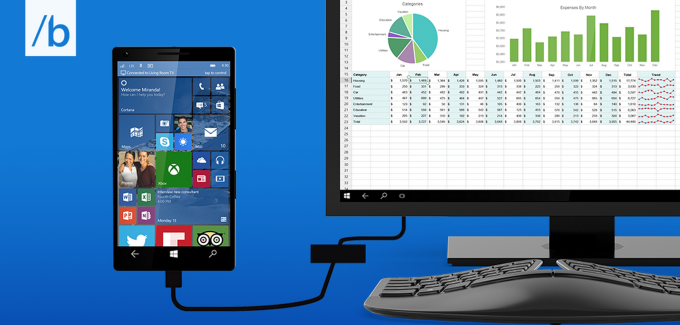When Motorola announced that its then flagship “Atrix” will run a portable version of Linux, powering a desktop experience, it was like the holy grail of convergence. Moore’s law certainly held true, for imagining that, someday, our phones could be as powerful as our PCs. Today, they almost are, so Microsoft is finally stepping forward to bring the desktop OS experience, powered by the same device in your pocket. At Build 2015, Microsoft was clear that Windows 10 wants to exist in devices of all sizes and types, especially now with the universal apps’ promise of “write once, deploy everywhere”. So, it only seems natural that this would happen, a single platform with the same code base, stretching across different screen sizes, with a responsive user interface for apps as well as the operating system. Dubbed “Continuum for phone”, this feature will make Windows 10 the first responsive operating system, one that scales to a variety of screen sizes, or even exist in holograms. Here’s a demo from Joe Belfiore –
httpv://www.youtube.com/watch?v=-oi1B9fjVs4
The idea is certainly not new, but Windows 10 now happens to be only operating system that can scale to any screen size and maintain a solid level of usability. Android comes close, but iOS universal apps are still vastly different from anything their desktop experience offers. The convergence has been slow. Chrome OS can now run Android apps, but it’s still not the same underlying code, so Microsoft seems to have gone closer to that vision. Your Windows 10 phone will connect to a dock of some sort that will let you connect it to a bigger display, for which the responsive interface reacts appropriately.
By using a keyboard and mouse along with it, the desktop experience is complete, with the start menu sliding into the bottom left. The phone’s wallpaper expands, lets you run all these universal apps in windows or fullscreen. Basically it will be your portable PC, with the responsive interface enabling more productivity. Some things are suited just for the big screen. This development, I had personally awaited for a long time. Next step of course, would be to look out for new hardware running Windows 10 that is capable of supporting this feature, then. Microsoft says it needs an upcoming special processor from Qualcomm to drive two screens at the same time, so basically only new devices. The future finally feels real, but with that said, what is your opinion on this piece of information? Sound off in the comments section below.

